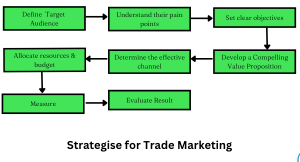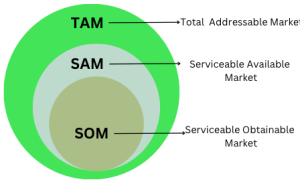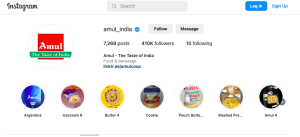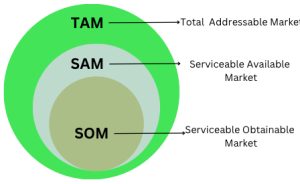User Experience
User Experience
Definition
The overall experience of users while using a product or service is defined as user experience.
Description
Brands can expect repeated purchase or multiple visits from a user only if their experience on the website or digital touchpoint is positive. It gained relevance because it improves product usability experiences.

The broad term of it explains how well the users can navigate the product or how beautifully the content is displayed. This is why it is called user-centred design (UCD).
It makes the journey fulfilling for the users so that they stick longer and stay loyal to the products and services. For a website, making the user’s journey seamlessly effortless, is important.
Every interaction at different touchpoints between the customer and the company is included when measuring the user experience.
Importance of user experience.
User experience is important because it:
- Makes navigation easier for the users on the website.
- Gives a positive experience that keeps the users loyal to the brand.
- Better word of mouth publicity for the brand.
- Repeat visits to the website for increased sales.
How to develop user experience?
These are the process in which you can develop user experience:
Step1: Create user profiles and personas:
In the first step, you can develop user personas that relate to voice and the emotions of the users. You can then create the content of the website around the same thoughts. Ultimately, you have the site that talks about what the users want. You can build personas around having these things in common-
- Demographics that are age, location, family status, and career.
- Personality which can be introvert or extrovert.
- Intent that can be around fear, power, authority-building, and incentivisation.
Step 2: Compare different interfaces to offer quality user experience:
Before finalising a design, you must compare various user interfaces and the user experiences it offers. A small CTA button can influence the effectiveness of the website which can keep the users on your website for long.
Step 3: Consider user surveys :
Conduct surveys to find how the target audience behave while they use your website. Does any element confuse them or do they find any element extra-ordinary.
Step 4: Evaluate based on the user flow diagram:
Make a user flow diagram to show how the user should move in the system. Now compare it with the way the users actually move through the website. After evaluating, you can actually find and make necessary changes to enhance it.
Step 5: Creating a sitemap:
A sitemap is a guide to tell how the user on a website moves from point A to point B. It also elaborates on how many clicks does the user complete the journey.
Step 6: Wireframes and Prototypes:
Wireframes are visual guides that give the framework of the web pages and give a preview of your site to show how it looks and feels. You can rectify development issues before hitting the final design.
Step 7: Style guides:
Style guides are indicative of making consistent content style across the website. It is important to maintain consistency to improve the UX of the website.
Example

Forbes is a business magazine that offers high-quality content that engages the user for a long time. But an unusually high number of banner ads and pop-ups make it difficult to read a whole article.
FAQs
What are the 7 factors that affect the user experience?
Seven factors that affect the UX include:
- Useful
- Usable
- Credible
- Valuable
- Accessible
- Desirable
- Findable
What are the types of user experience?
There are three types of UX:
- Interaction Design which focuses on how users interact with the product or services.
- Visual Design stresses on how the look and feel of the product appears.
- Information Architecture spells about how information is organised before it is presented to the users.
Difference between user experience and customer experience.
This is the difference between user experience and customer experience:
| User Experience | Customer Experience |
| User Experience (UX) is the study of how users engage with your product and what kind of experience they have as a result. | Customer experience talks about all interaction a person has with your brand. It defines the likelihood to use the brand. |
| Metrics like success rate, error rate, abandonment rate, time to finish task, and (since we deal in digital) clicks to completion are used to measure it. | Metrics like customer effort score, customer satisfaction, net promoter score, customer churn rate, customer referral rate, average resolution time, and first contact resolution are used to measure customer experience. |
Trade Marketing
Trade Marketing
Definition
Trade marketing is promoting and selling products to retailers and wholesalers rather than to end consumers.
Description
It is a business strategy that promotes and sells products to retailers, wholesalers, and distributors rather than directly to end consumers. The goal of trade marketing is to increase sales and distribution of a product by establishing relationships with retailers and wholesalers and providing them with marketing support, incentives, and promotions.

Its activities can include point-of-sale displays, product demonstrations, trade shows, co-marketing initiatives, and other tactics designed to drive product awareness and demand among trade partners. Companies can effectively execute its initiatives to improve their product distribution, increase sales volume, and build strong relationships with key retail partners.
Importance of Trade Marketing
It is important for several reasons:
- Increased sales: By promoting products directly to retailers and wholesalers, it can increase sales volume and revenue for manufacturers and distributors.
- Improved brand recognition: Effective trade marketing can improve brand recognition and awareness among retailers and wholesalers, leading to more shelf space and product visibility in stores.
- Stronger relationships with retail partners: Its initiatives can help manufacturers and distributors build stronger relationships with their retail partners, leading to better collaboration, more favourable shelf placements, and increased sales.
- Better distribution: By working closely with retail partners, it can help ensure that products are distributed effectively and efficiently, reaching the broadest possible audience.
- Competitive advantage: Effective trade marketing can give manufacturers and distributors a competitive advantage by helping them stand out from their competitors and build stronger relationships with key retail partners.
How to Strategise for Trade Marketing?
Here are some steps to strategize for it:

- Define your target audience: Identify the retailers and wholesalers you want to target with your marketing efforts. Consider factors such as geography, size, and product category.
- Understand their needs and pain points: Conduct research to understand your target audience’s needs and pain points. What do they want from their suppliers? What challenges do they face in their business?
- Set clear objectives: Determine what you want to achieve through your efforts. This could include increasing sales, improving brand recognition, or building stronger relationships with retail partners.
- Develop a compelling value proposition: Create a value proposition highlighting your product’s unique benefits and advantages for retailers and wholesalers. This could include pricing, quality, innovation, or support.
- Determine the most effective channels and tactics: Identify the most effective channels and tactics for reaching your target audience. This could include trade shows, point-of-sale displays, co-marketing initiatives, or other tactics tailored to your target audience.
- Allocate resources and budget: Determine how much you will invest in your efforts and allocate resources accordingly. This could include personnel, materials, and other resources.
- Measure and evaluate results: Track the results of your trade marketing efforts and assess their effectiveness in achieving your objectives. Use this information to refine your strategy and tactics over time.
Future Technique of Trade Marketing
The future will likely involve the integration of technology and data analytics to create more personalised and targeted marketing campaigns. Here are some future techniques of trade marketing:
- AI-powered personalization: Artificial intelligence (AI) can be used to analyse data and create personalised marketing campaigns tailored to retailers’ and wholesalers’ specific needs and preferences.
- Augmented Reality (AR): AR technology can be used to create immersive and interactive product demonstrations that help retailers, and wholesalers understand the features and benefits of a product.
- Virtual Reality (VR): VR technology can be used to create virtual trade shows and product demonstrations that allow retailers and wholesalers to experience products more engaging and immersively.
- Blockchain: Blockchain technology can create a more transparent and secure supply chain, which can help build trust and credibility with retailers and wholesalers.
- IoT (Internet of Things): IoT technology can create intelligent products that provide retailers and wholesalers real-time data and insights into product performance, inventory levels, and other vital metrics.
- Social media: Social media platforms can create targeted marketing campaigns that reach retailers and wholesalers directly and build strong relationships with them.
Strategies for Effective Trade Marketing
Some effective strategies that businesses can consider in 2023:
- Personalised Marketing: Tailor your marketing messages to specific customer segments. Leverage data analytics to identify customer behaviour and preferences to provide targeted promotions, content, and experiences.
- Omnichannel Marketing: Integrate all your marketing channels (social media, email, SMS, in-store displays, etc.) to create a seamless customer experience across multiple touchpoints.
- Influencer Marketing: Collaborate with social media influencers with a significant following in your industry to reach a broader audience and increase brand awareness.
- Interactive Marketing: Engage customers with interactive experiences, such as quizzes, augmented reality, and gamification, to create memorable experiences and increase brand loyalty.
- Account-Based Marketing: Target critical accounts with a personalised marketing approach. This involves researching the company, understanding its pain points, and providing solutions that meet its needs.
- Collaborative Marketing: Partner with other non-competing brands to create joint marketing campaigns that benefit both businesses.
- Video Marketing: Use video content to communicate your brand message, showcase products, and engage customers on social media and other online platforms.
- Data-Driven Marketing: Utilise customer data to gain insights into their behaviour and preferences. Use this information to create targeted marketing campaigns that resonate with customers and drive conversions.
- Sustainable Marketing: Incorporate sustainable practices into your marketing campaigns to appeal to environmentally conscious consumers.
- Voice Search Optimization: Optimise your website and content for voice search queries to reach customers who use voice assistants like Amazon Alexa and Google Assistant.
Example
Coca-Cola uses a variety of trade marketing tactics to promote their products to retailers and wholesalers and ultimately increase sales. Coca-Cola creates eye-catching point-of-sale material, such as posters, banners, and shelf talkers, to promote its products in stores.
 Coca-Cola offers retailers and wholesalers promotions and incentives, such as discounts, rebates, and free products, to encourage them to stock and sell more Coca-Cola products.
Coca-Cola offers retailers and wholesalers promotions and incentives, such as discounts, rebates, and free products, to encourage them to stock and sell more Coca-Cola products.
Coca-Cola participates in trade shows to showcase its products and network with potential customers.The brand collaborates with other brands to create joint promotions and campaigns that benefit both businesses.Coca-Cola also provides training and support to retailers and wholesalers to help them sell Coca-Cola products more effectively.
FAQ
What is trade marketing?
It refers to marketing products or services to businesses and other organisations rather than to end consumers. Trade marketing aims to create demand for a product or service among retailers, wholesalers, and other intermediaries who can help distribute and promote the product.
How is trade marketing different from consumer marketing?
Consumer marketing focuses on promoting products or services directly to end consumers. Trade marketing targets intermediaries such as retailers and wholesalers who can help distribute and promote the product to consumers.
What are some examples of trade marketing tactics?
Some common tactics include point-of-sale materials, co-branding, trade shows, training and support, promotions and incentives, and data analysis.
How can trade marketing benefit a business?
Effective trade marketing can help businesses build strong relationships with retailers and wholesalers, increase brand visibility and awareness, and drive sales by creating product demand among intermediaries who can help promote and distribute them to end consumers.
What skills are needed for a career in trade marketing?
Skills that can be helpful include strong communication and relationship-building skills, a strategic mindset, analytical skills, creativity, and the ability to work collaboratively with cross-functional teams.
What is the role of data in trade marketing?
Data plays a critical role in trade marketing by helping businesses understand their target audience, track the effectiveness of their marketing campaigns, and make data-driven decisions about allocating resources and optimising their marketing strategies.
Total Addressable Market(TAM)
Total Addressable Market
Definition
Total Addressable Market (TAM) refers to the total revenue opportunity available for a specific product or service within a particular market.
Description
Total Addressable Market (TAM) is a term used to describe the revenue potential or opportunity for a particular product or service within a specific market. It represents the maximum revenue a company could generate by selling its product or service to every potential customer in a given market.

TAM is usually calculated based on the total number of customers, the average selling price of the product or service, and the estimated demand for it in the market. It is an important metric for businesses as it helps them determine the market size and the potential revenue that can be generated, which in turn helps in making strategic decisions about product development, pricing, and marketing.
Importance of TAM
Total Addressable Market (TAM) is an essential metric for businesses as it helps them understand the revenue potential of a particular product or service within a specific market. Here are some key reasons why TAM is important:
- Market Sizing: It helps businesses to estimate the size of the market they are operating in, which is crucial for determining the overall growth potential of the business.
- Investment Decision-making: Investors often use TAM as a critical factor in their investment decision-making process, as it provides an understanding of the potential return on investment (ROI).
- Pricing Strategy: It helps businesses determine the optimal pricing strategy for their products or services by providing insights into the demand for the product and the market size.
- Product Development: It helps businesses to identify new opportunities for product development and expansion by providing insights into the potential demand for new products and services within a specific market.
- Competitive Landscape: TAM analysis helps businesses to understand the competitive landscape within a specific market, which is crucial for developing effective marketing and sales strategies.
How to calculate TAM?
Calculating the Total Addressable Market (TAM) involves estimating the total revenue opportunity available for a specific product or service within a particular market. Here are some common steps for calculating TAM:
- Define the Target Market: The first step is to define the target market, which includes identifying the customer demographics, needs, and purchasing behaviour. This helps to estimate the total number of potential customers in the market.
- Calculate Market Size: Once the target market is defined, the next step is to estimate the market size. This involves collecting data on the number of potential customers and the average selling price of the product or service.
- Determine the Addressable Market: The addressable market is the portion of the total market that the business can realistically capture. This depends on the business’s capabilities, resources, and competitive landscape.
- Calculate TAM: Finally, it can be calculated by multiplying the estimated number of potential customers in the market by the average selling price of the product or service. This estimates the total revenue opportunity available for the business within the target market.
Future aspects of TAM
The future aspects of the Total Addressable Market (TAM) are influenced by various factors, including technological changes, economic conditions, and shifts in consumer behaviour. Here are some potential future developments that could impact it:
- Emerging Markets: With the rise of emerging markets such as China, India, and Brazil, there is a significant potential for growth in TAM as more people gain access to technology and disposable income.
- Digital Transformation: Digital transformation is changing how businesses operate and interact with customers, which is likely to result in new products and services being developed, leading to an expansion of it.
- Demographic Shifts: As the population ages and becomes more diverse, there will be changes in consumer behaviour, which could lead to the development of new products and services and an increase in it.
- Climate Change: Climate change will likely result in changes in consumer behaviour and preferences, leading to new opportunities for businesses to develop environmentally sustainable products and services and expand it.
- Technological Advancements: As technology advances, new products and services will be developed, leading to an expansion of it. This could include the development of new industries such as virtual reality, artificial intelligence, and robotics.
Example Of TAM
Total Addressable Market (TAM) for the iPhone includes all potential customers who could purchase an iPhone in a specific market based on demographics, purchasing behaviour, and competition.
Apple estimates its iPhone TAM by calculating the total number of potential customers in the market, multiplying it by the average selling price of the iPhone, and adjusting it based on factors such as the level of competition and the company’s market share. By understanding its iPhone TAM, Apple can make informed decisions about product development, pricing, and marketing, which helps to ensure the long-term success of the iPhone product line.
FAQ
What is the Total Addressable Market (TAM)?
Total Addressable Market (TAM) is the total revenue opportunity available for a specific product or service within a particular market.
Why is TAM important?
It is important as it helps businesses understand the potential revenue of a particular product or service within a specific market. This information can help businesses make informed decisions about market sizing, investment, pricing strategy, product development, and competitive positioning.
How do you calculate TAM?
Calculating TAM involves estimating the total revenue opportunity for a specific product or service within a particular market. This can be done by defining the target market, calculating market size, determining the addressable market, and multiplying the estimated number of potential customers by the average selling price of the product or service.
What are some limitations of TAM?
It is an estimate subject to change based on various factors, such as market conditions, competition, and customer behaviour. Additionally, It does not take into account factors such as distribution channels, marketing expenses, and product differentiation.
How can businesses use TAM?
Businesses can use it to inform their decision-making process about market sizing, investment, pricing strategy, product development, and competitive positioning. It can help businesses identify new growth opportunities, understand their competitive landscape, and optimise their marketing and sales strategies.
Targeting
Targeting
Definition
Targeting is identifying and directing marketing efforts towards a specific audience or group of individuals most likely to respond positively to a product or service.
Description
It is focusing marketing efforts on a specific group or audience most likely to be interested in a product or service. It involves identifying a particular group’s characteristics, behaviours, and needs and tailoring marketing messages and strategies to effectively reach and engage that group.

It aims to maximise the effectiveness and efficiency of marketing efforts by getting the right people with the right message at the right time.
Importance of Targeting
It is important in marketing for several reasons:
- Increased Efficiency: By targeting specific groups of people more likely to be interested in a product or service, marketing efforts become more efficient and effective, reducing the resources and budget needed to reach the desired audience.
- Improved Relevance: It allows marketers to tailor their message and approach to the specific needs, preferences, and behaviours of a particular group, increasing the relevance and appeal of their marketing efforts.
- Higher Conversion Rates: It improves the likelihood of converting prospects into customers because the messaging and approach are specifically designed to appeal to their needs and interests.
- Reduced Waste: By targeting only the most relevant audience, marketers can avoid wasting resources on those unlikely to be interested or make a purchase, reducing costs and increasing ROI.
- Competitive Advantage: Effective targeting can provide a competitive advantage by enabling companies to differentiate themselves from competitors and appeal more strongly to specific customer segments.
Types of Targeting
There are several types that marketers use to reach specific audiences. Here are some of the most common types:
- Demographic targeting: This involves demographic characteristics such as age, gender, income, education, and occupation.
- Geographic targeting: This involves geographic location, such as city, state, region, or country.
- Psychographic targeting: This involves personality traits, values, interests, and lifestyle choices.
- Behavioural targeting: This involves behaviour, such as browsing history, search history, and purchase history.
- Contextual targeting: This involves the content of a web page or app where the ad is displayed, such as focusing on ads related to sports on a sports website.
- Retargeting involves individuals who have previously interacted with a company or product, such as those who have visited a website or added items to a shopping cart.
- Account-based targeting involves specific companies or organisations, rather than individuals, with personalised marketing messages.
Future Aspect of Targeting
The future of it will likely see continued innovation and evolution as technology and data become more sophisticated. Here are some potential future aspects:
- Artificial intelligence (AI) and machine learning: These technologies can analyze vast amounts of data and identify patterns and insights to improve accuracy and efficiency.
- Personalization: As consumer data becomes more readily available, it efforts will increasingly focus on creating personalized experiences for individual consumers based on their behaviours, preferences, and interests.
- Cross-device targeting: As consumers use multiple devices throughout their day, its efforts must account for this and create a seamless experience across devices.
- Privacy concerns: With increased scrutiny of data privacy and regulation, efforts will need to balance personalized marketing with respect for consumer privacy.
- Voice-activated targeting: As voice assistants and smart speakers continue to grow, its efforts must adapt to this new mode of interaction and create tailored experiences for voice-activated devices.
Example
A famous example of it is an Indian brand “Amul”, a famous dairy brand that targets middle-class Indian consumers. Amul’s marketing campaigns are designed to appeal to the values and preferences of this target audience, including emphasising the importance of dairy in the Indian diet, promoting the brand as a source of quality and affordable dairy products, and using Indian cultural references and celebrities in their advertising.
For example, Amul’s long-running “Utterly Butterly Delicious” campaign features a cartoon character named the Amul Girl, who has become a cultural icon in India. The campaign uses humour and wit to appeal to the Indian middle class and position the brand as a staple in the Indian household. Amul also targets specific segments of the Indian population, such as children, with campaigns promoting their flavoured milk products as healthy and nutritious alternatives to soft drinks.Amul’s targeting strategy has successfully established the brand as a trusted and popular choice among middle-class Indian consumers, with a strong presence across India’s urban and rural markets.
Also Read – Marketing Case Study Of Myntra 2024
FAQ
What is targeting in marketing?
In marketing it means identifying and reaching specific groups of people most likely to be interested in a particular product or service.
Why is targeting important in marketing?
It is important in marketing because it allows marketers to reach the most relevant audience, increase the efficiency and effectiveness of their marketing efforts, improve relevance and conversion rates, reduce waste, and gain a competitive advantage.
What are the different types of targeting?
The different types include demographic, geographic, psychographic, behavioural, contextual, retargeting, and account-based targeting.
How is targeting likely to evolve in the future?
It will evolve with artificial intelligence and machine learning, increased personalization, cross-device, privacy concerns, and voice-activated targeting.
What is an example of targeting by an Indian brand?
Amul is an example of an Indian brand that targets middle-class Indian consumers through marketing campaigns that appeal to the values and preferences of this target audience, including emphasising the importance of dairy in the Indian diet and using Indian cultural references in their advertising.
Also Read – CASE STUDY: Understanding and targeting your most valuable market segments for growth
Topical Content
Topical Content
Definition
Topical content refers to any relevant and up-to-date content with the current trends, news, and events of a particular industry or field.
Description
Businesses, organisations, and individuals stay relevant and establish themselves as thought leaders in their industry by using it. Timely and relevant content for current events, they can attract and engage their target audience, build brand awareness, and establish credibility and authority in their field.

It provides valuable insights, information, and perspectives on the latest happenings, issues, and developments in a specific area of interest. It can also take many forms, including blog posts, news articles, podcasts, videos, social media posts, and more. In addition, it can cover a wide range of subjects, such as technology, politics, entertainment, health, business, and more.
Importance of Topical Content
It is essential because it helps businesses, organisations, and individuals to:
- Stay current and relevant: They can stay relevant and top-of-mind with their target audience by creating content aligned with current events and trends.
- Build authority and credibility: By sharing their insights and expertise on current topics, they can establish themselves as thought leaders and build credibility and authority with their audience.
- Increase engagement and reach: It is more likely to be shared and engaged with by their audience, leading to increased visibility, traffic, and engagement for their brand or organisation.
How to create a topical content strategy?
Here are some steps to create a topical content strategy:
- Identify your target audience: Determine who your target audience is, their interests, and what kind of content they engage with.
- Stay up-to-date with industry news and trends: Stay informed about your industry’s latest news and trends by following relevant sources and attending industry events.
- Conduct keyword research: Use tools like Google Keyword Planner to identify relevant keywords related to current events or trends in your industry.
- Plan your content calendar: Create a content calendar that aligns with current events and trends and that includes a mix of different content types, such as blog posts, videos, social media posts, and more.
- Incorporate a variety of perspectives: Incorporate different perspectives into your content by interviewing industry experts, featuring guest writers, or sharing user-generated content.
- Promote your content: Share your content on social media, email newsletters, and other relevant channels to ensure maximum visibility and engagement.
Future use and application of topical content strategy
The future use and application of topical content strategy will continue to grow in importance as the digital landscape evolves. Here are a few reasons why:
- Increasing competition: As more businesses and organisations compete for consumers’ attention online, creating it that resonates with their target audience will become more important to stand out and stay relevant.
- Evolving technology: As technology evolves, new platforms and formats for creating and sharing content will emerge. Its strategies will need to adapt to these changes to remain effective.
- The growing importance of personalization: As consumers become more accustomed to personalised content experiences, its strategies that consider individual interests and preferences will become increasingly important to drive engagement and loyalty.
Benefits of topical content strategy
There are several benefits, including:
- Increased visibility and traffic: It aligned with current events and trends can attract a larger audience and increase traffic to your website or social media channels.
- Improved engagement and interaction: Topical content that resonates with your target audience can increase engagement, comments, and shares, which can help build a community around your brand or organisation.
- Establishing authority and credibility: By providing valuable insights and expertise on current topics, you can establish yourself as a thought leader in your industry and build credibility and trust with your audience.
- Improved SEO: Creating topical content that incorporates relevant keywords and phrases can improve your search engine rankings and increase visibility for your brand or organisation.
- Cost-effective marketing: It can be a cost-effective marketing strategy as it does not require a large budget for production and can be shared across multiple channels for maximum impact.
Example

Nike regularly creates topical content that aligns with current events, such as their “Equality” campaign during the Black Lives Matter protests, which featured athletes and celebrities advocating for racial equality.
FAQs
What is topical content?
It is relevant and timely content that aligns with current events or trends in your industry or niche.
Why is topical content important?
It is essential because it can help businesses and organisations attract and engage their target audience, establish credibility and authority in their industry, and drive growth and success in today’s digital landscape.
How can I create a topical content strategy?
To create a topical content strategy, you can identify your target audience, stay up-to-date with industry news and trends, conduct keyword research, plan your content calendar, incorporate a variety of perspectives, and promote your content through relevant channels.
What are the benefits of a topical content strategy?
The benefits of a topical content strategy include increased visibility and traffic, improved engagement and interaction, established authority and credibility, improved SEO, and cost-effective marketing.
What are some examples of brands that use topical content?
Some examples of brands that use topical content include Nike, Coca-Cola, Red Bull, and Dove, which create content that resonates with their audience and helps build brand awareness and engagement.
Target Market
Target Market
Definition
Target market refers to a specific group of potential customers or consumers to a business or organisation that aims to sell its products or services.
Description
If a business does not define its target market, it may struggle to effectively reach and engage its intended audience, which can result in several negative consequences. With a clear understanding of its target audience, a business may save resources on marketing efforts that reach the right people or generate leads and sales.

This will lead to poor customer engagement and missed opportunities. It is identified based on various factors, such as demographic information (age, gender, income, education), psychographic information (lifestyle, values, personality), geographic location, and buying behaviour.
By understanding its market’s needs, preferences, and characteristics, a business can tailor its marketing and sales efforts to better appeal to and reach its intended audience.
Importance of Target Market
Defining and understanding your target market is crucial for the success of any business or organisation. Here are some reasons why it is essential:
- Efficient use of resources: By identifying your market, you can focus your marketing efforts and resources on the people most likely to be interested in your products or services. This can save you time, money, and effort, as you can only target people likely to become customers.
- Better customer understanding: By understanding your, you can learn more about their needs, preferences, and behaviors. This can help you create products and services that better meet their needs and develop more effective marketing campaigns to reach and engage them.
- Increased customer loyalty: By tailoring your products, services, and marketing efforts to your target market, you can create a stronger connection with your customers and build brand loyalty and trust.
- Competitive advantage: You can gain a competitive advantage by understanding your market and meeting its needs more effectively than your competitors.
- Improved return on investment (ROI): By focusing your marketing efforts on your target market, you can improve your ROI by generating more leads, conversions, and sales from a smaller, more targeted audience.
What are the types of target market?
A business can focus on several types of target markets, depending on its products or services, industry, and marketing objectives. Here are some of the most common types of target markets:
- Demographic: Focus on demographic characteristics such as age, gender, income, education, and occupation. For example, a business might target women aged 25-34 with a higher education degree and a certain income level.
- Geographic: Focus on specific geographic locations, such as a city, state, or region. For example, a business might target consumers in a particular zip code or neighbourhood.
- Psychographic: Focus on personality traits, values, and lifestyle characteristics. For example, a business might target environmentally conscious consumers who value sustainability.
- Behavioral: Target markets focus on consumer behaviours, such as past purchasing or browsing history. For example, a business might target consumers who have previously purchased similar products or shown interest in similar products or services.
- Firmographic: Focus on characteristics of businesses, such as industry, size, revenue, and location. For example, a company might target small to medium-sized businesses in the healthcare industry.
How to define the target market?
Defining your target market involves conducting research and analysis to identify the consumers or customers most likely to be interested in your products or services. Here are some steps you can take to define:
- Conduct market research: This may include surveys, focus groups, or other research methods to gather data on consumer behaviour, preferences, and demographics.
- Analyze your current customer base: Look at who purchases your products or services and identify common characteristics such as age, gender, location, and interests.
- Identify the benefits of your products or services: Determine what specific benefits your products or services offer and who might be most interested in those benefits.
- Analyze your competition: Look at who your competitors are targeting and how you can differentiate your products or services to appeal to a unique market segment.
- Create buyer personas: Based on your research and analysis, create detailed profiles of your ideal customers, including their demographics, behaviors, and needs.
- Test and refine: Once you have identified your target market, test your marketing efforts to ensure they resonate with your intended audience. Continually refine your market as you learn more about your customers and their preferences.
Benefits of defining target market
Defining your target market can provide numerous benefits for your business, including:
- A better understanding of customer needs: By defining your market, you gain a more profound experience of your customers’ needs, preferences, and behaviours, which can help you tailor your products or services to better meet their needs.
- More effective marketing: When you understand your market, you can create more targeted and relevant marketing campaigns that are more likely to resonate with your audience and drive conversions.
- Increased customer loyalty: By tailoring your products, services, and marketing efforts to your preferred market, you can build stronger customer relationships and foster greater loyalty and trust.
- More efficient use of resources: By focusing your marketing efforts and resources on your target market, you can save resources on customers who are unlikely to be interested in your products or services.
- Improved return on investment: By targeting your marketing efforts on your ideal customers, you can improve your ROI by generating more leads, conversions, and sales from a smaller, more targeted audience.
- Competitive advantage: You can gain a competitive advantage by understanding your target market and meeting its needs more effectively than your competitors.
Example
One example of an Indian brand that has effectively defined its target market is Amul. Amul is a dairy cooperative that produces and markets a range of dairy products, including milk, cheese, butter, and ice cream.

Amul has defined its target market as middle-class Indian consumers prioritising quality and affordability. The brand’s marketing efforts focus on this market, with ads featuring Indian families and celebrities consuming and endorsing Amul products.
Amul has also tailored its products and services to appeal to its target market. For example, the company’s products are priced affordably and come in a range of sizes and packaging to cater to its market’s varying needs and budgets.
Amul’s focus on its target market has helped the brand to become a household name in India, with a loyal customer base that trusts and values its products. In addition, Amul’s marketing campaigns, such as the iconic “Amul girl” advertising campaign, have also helped to build brand recognition and awareness among its target market.
Target Audience
Target Audience
Definition
Group of people bound by their common interests, demographics, and behaviour whom a brand wants to approach is the target audience.
Description
Knowing the target audience is important to channelise marketing efforts so that businesses earn profits. By knowing it, companies can create buyer’s personas which are helpful in developing useful content.

It helps a company identify who all are interested in their service or products. And to keep these customers engaged with the company, they need to create content to convey a message that appeals to the target audience.
Importance of identifying Target Audience
Identifying a target audience is important when you decide to start a business. This is how you can be benefitted :
- Marketing efforts are more channelised that helps you stick to your budget.
- Increases the scope of competition for small businesses that can compete with the bigger ones by defining their audience.
- Lead generation is made more cost-effective and is focused.
Ways to find target audience
These are the ways to find your target audience:
- Consider the needs or problems that your product or service aims to solve. If your company creates websites, you might be able to connect with small business owners that lack access to design resources internally.
- Analyse your rivals: If you are aware of who they are, consider their market. There is a good potential that they will make connections with individuals that could be beneficial to your company.
- Obtain data and information about your existing clients: There are several resources available that can assist you in discovering more about your target market. You can use tools like Facebook and Instagram to know the demographics of the audience.
Future of Audience Targeting
Defining your audience will hold more relevance in the future.
- In future, audience targeting will bring increased ROI if the audience is defined considering their behavioural data.
- Engagement on the digital channels is expected to rise.With the rise of the internet users and the social platforms, it is obvious that the engagement on the digital channels will rise manifold in the future. And to keep understanding such a massive audience, it is important to combine the contextual data and behavioural data to build a clear picture of the audience for effective marketing.
- Gradually, demographic segmentation will face its death because it treats all the consumers equal, ignoring the fact that some of them are active while others are not.
Example
Nike sells its apparel, shoes, and accessories to the people who play sports. Their product stands for durability and good quality that justifies the product’s price. The brand target young and aspiring athletes and runners to motivate them to push themselves beyond limits.
FAQs
What are the tips to consider when looking for a target audience.
These are the tips to consider when looking for your audience:
- Decide what you want to achieve?
- Consider the existing market research.
- Have a plan B
- Make wise decisions about your products and services
- Always evaluate what you decide and execute.
- Use social media reports and metrics to engage your target audience.
- Create an omnichannel marketing strategy.
- Team up with complimentary business.
Why should you think about the target audience?
It helps you to create effective marketing campaigns for your target audience. It is generating business in an affordable manner.
Some audience targeting strategies from the experts.
These are the audience targeting strategies from the experts:
- Use Facebook custom audience and retargeting
- Add chatbots to your plans
- Start tracking
- Remarket with Google Ads
- Expand reach with Google’s in-market audience feature
- Try LinkedIn for keyword research
- Target with organic SEO
Serviceable Available Market
Definition
Serviceable Available Market (SAM) refers to the portion of the total addressable market (TAM) that a company or product can realistically target and serve with its offerings.
Description
A business or product can realistically serve and capture revenue from, given its resources, capabilities, and market positioning. It represents the subset of the TAM accessible to the company, considering factors such as geography, customer demographics, product fit, and competition.

It is the portion of the market that a company can target and effectively compete in to generate revenue and grow its business. Understanding and sizing it is crucial for businesses to make informed strategic decisions about resource allocation, market-entry, and growth potential.
Importance of Serviceable Available Market(SAM)
Understanding the Serviceable Available Market (SAM) is important for businesses for several reasons:
- Strategic planning: Knowing the SAM helps businesses determine their target audience and where to focus their marketing efforts. It enables them to make informed decisions about resource allocation and identify areas for growth.
- Resource allocation: Businesses can allocate their resources more effectively by identifying the SAM. They can concentrate their efforts on serving the customers most likely to buy their products or services rather than wasting resources trying to reach an unrealistic or unprofitable market portion.
- Market positioning: Understanding it can help businesses position themselves. They can tailor their offerings to meet the needs of their target audience and differentiate themselves from competitors.
- Revenue growth: By focusing on the SAM, businesses can increase their revenue growth potential. They can capture a larger market share by serving the customers most likely to buy from them and expanding their offerings to meet the needs of this audience.
How to serve a Serviceable Available Market(SAM)?
To serve a Serviceable Available Market (SAM), businesses should follow these key steps:
- Define the SAM: Businesses need to define and size their SAM by understanding their target customers, their needs, and their willingness to pay for the products or services offered. This involves conducting market research, analysing customer data, and evaluating the competition.
- Position the product or service: Once the SAM has been defined, businesses should position their product or service to meet the needs of this market. This includes tailoring the product or service features, pricing, and marketing messages to appeal to the target audience.
- Allocate resources effectively: Businesses must allocate their resources effectively to serve it. This involves investing in the proper channels and marketing campaigns to reach the target audience, building a strong customer support team, and ensuring high-quality products or services.
- Continuously monitor and adapt: Serving the SAM is an ongoing process that requires continuous monitoring and adaptation. Businesses need to track customer feedback, analyze market trends, and adjust their strategy to remain competitive and meet the evolving needs of their target audience.
Future aspects of Serviceable Available Market(SAM)
The future aspects of the Serviceable Available Market (SAM) constantly evolve and depend on several factors, including changes in customer needs, technological advancements, and shifts in the competitive landscape. Some potential future trends and developments include:
- Increasing focus on niche markets: As competition intensifies in many industries, businesses may increasingly focus on serving smaller, more specialised markets that are underserved or overlooked by more prominent players.
- Greater personalization: With the rise of big data and AI, businesses can personalise their offerings to a greater degree, serving individual customers’ unique needs and preferences.
- More emphasis on sustainability: As consumers become increasingly aware of environmental and social issues, businesses may need to prioritise sustainability to remain competitive and appeal to customers who value ethical and responsible practices.
- The growing importance of emerging markets: With rising incomes and changing demographics in many emerging markets, businesses may need to focus on serving these markets to capture new growth opportunities.
- Evolving technology: Advances in technology such as 5G, artificial intelligence, and the internet of Things (IoT) may create new opportunities for businesses to serve it by offering innovative products and services that leverage these technologies.
Example
One example of an Indian brand that serves a Serviceable Available Market (SAM) is Amul. Amul is a dairy cooperative that produces a wide range of dairy products, including milk, butter, cheese, and ice cream. Its SAM is made up of consumers in India who value high-quality dairy products that are affordable and easily accessible.
Amul has effectively positioned itself as a brand that caters to this specific SAM by offering high-quality dairy products at competitive prices and leveraging its extensive distribution network to make these products widely available across India. The company has also invested heavily in marketing and building a strong brand identity, which has helped it build a loyal customer base and compete effectively with more prominent multinational players in the Indian market.By serving its SAM effectively, Amul has grown rapidly and has become one of the most recognized and trusted brands in India. Its success has also inspired other dairy cooperatives and companies to enter the market, increasing competition in the dairy segment. However, Amul’s strong brand positioning and focus on serving its SAM continue to differentiate it from competitors and drive its growth in the Indian market.
FAQ
What is the Serviceable Available Market (SAM)?
Serviceable Available Market (SAM) refers to the portion of the total addressable market (TAM) that is realistically reachable and serviceable by a business based on its resources, capabilities, and market positioning.
Why is SAM important for businesses?
SAM is important for businesses because it helps them focus their resources on the most profitable market segments and maximise their return on investment. By defining and sizing it, businesses can tailor their product or service offerings, pricing strategies, and marketing messages to meet their target customers’ specific needs and preferences.
How do businesses determine their SAM?
Businesses determine by conducting market research, analysing customer data, evaluating the competition, and assessing their resources and capabilities. This involves identifying the target customers, understanding their needs and willingness to pay, and estimating the size that is based on factors such as geographic location, demographic characteristics, and market trends.
How can businesses effectively serve their SAM?
To effectively serve it, businesses need to tailor their product or service offerings, pricing strategies, and marketing messages to meet their target customers’ specific needs and preferences. This involves investing in the proper channels and marketing campaigns to reach the target audience, building a strong customer support team, and continuously monitoring and adapting their strategy based on customer feedback and market trends.
How does SAM relate to Total Addressable Market (TAM) and Serviceable Obtainable Market (SOM)?
SAM is a subset of the TAM, representing the total market demand for a specific product or service. SOM, on the other hand, is the portion of it that a business can realistically capture based on its resources, capabilities, and market positioning. In other words, SAM represents the potential market size for a company, while SOM represents the actual market size it can capture.
Soft Bounce
Soft Bounce
Definition
A soft bounce is a temporary delivery failure of an email due to a temporary issue with the recipient’s email server or inbox.
Description
A soft bounce is a temporary failure to deliver an email to the intended recipient’s inbox. It occurs when a temporary issue with the recipient’s email server or inbox prevents the email from being returned, such as a full inbox or a technical problem with the email server.

Soft bounces are usually resolved automatically, and the email is typically delivered after a few attempts. However, if the problem persists, the email may eventually be classified as a hard bounce and permanently rejected.
Soft bounces are a common occurrence in email marketing. They can be caused by various factors, such as the recipient’s email server being down, the email being too large, or the recipient’s inbox being full. Email marketers can regularly clean their email lists, avoid using certain trigger words or phrases in the email content, and ensure their emails comply with the email service provider’s policies and guidelines to reduce the likelihood of soft bounces.
Importance of Soft Bounce
Soft bounces are important for email marketers to understand because they provide information about the health and deliverability of their email campaigns. Here are some reasons why soft bounces are important:
- Temporary issue: Soft bounces indicate that the email address is still valid, but a temporary problem prevents the email from being delivered. This means that there is still a chance for the email to be delivered in the future.
- Email hygiene: Soft bounces can be caused by invalid or inactive email addresses. By regularly monitoring soft bounces and removing invalid email addresses, email marketers can improve their email list hygiene and increase their deliverability rates.
- Engagement metrics: Soft bounces can also impact engagement metrics such as open and click-through rates. If an email bounces, it will not be counted as delivered, which can skew the metrics and make it difficult to accurately gauge the campaign’s success.
- Reputation management: Email service providers use bounce rates to determine the sender’s reputation. High bounce rates can negatively impact the sender’s reputation and increase the likelihood of future emails being marked as spam.
How to prevent Soft Bounce?
While soft bounces are typically temporary and resolve on their own, there are several steps that email marketers can take to prevent them in the first place:
- Use double opt-in: Implementing a double opt-in process can help prevent invalid email addresses from being added to your email list, reducing the likelihood of soft bounces.
- Regularly clean your email list: Remove inactive or invalid email addresses from your email list to reduce the chances of soft bounces caused by these addresses.
- Check email content: Certain keywords and phrases in the email content can trigger spam filters and increase the likelihood of soft bounces. Avoid using trigger words such as “free”, “buy now”, or “act fast” in your emails.
- Manage sending frequency: Sending too many emails to the same recipient in a short period can trigger soft bounces. Manage your sending frequency and consider using email scheduling tools to spread out your email sends.
- Monitor delivery rates: Regularly monitor your delivery rates and investigate any sudden drops in deliverability to identify and resolve issues that could lead to soft bounces.
Example
An example of a soft bounce is when an email cannot be delivered to the recipient’s inbox due to a full mailbox, a temporary issue with the email server, or the email being too large to be accepted by the recipient’s server. In such cases, the email is returned to the sender with a soft bounce message indicating that the email could not be delivered then but would be retried later.
FAQ
What is a soft bounce in email marketing?
A soft bounce is a temporary failure to deliver an email message to a recipient’s inbox. The email message is returned to the sender with an error message indicating that the message could not be provided at that time.
What causes a soft bounce?
Soft bounces are caused by temporary issues with the recipient’s email server or mailbox, such as a full mailbox, a brief outage of the email server, or a message too large to be accepted by the recipient’s server.
How is a soft bounce different from a hard bounce?
A soft bounce is a temporary issue that can often be resolved independently. In contrast, a hard bounce is a permanent failure to deliver an email message due to an invalid email address or a non-existent domain.
What are the implications of a high soft bounce rate?
A high soft bounce rate can negatively impact email deliverability and sender reputation, as it indicates to email service providers that the sender is sending to a low-quality email list. This can lead to emails being filtered as spam or blocked altogether.
How can soft bounces be prevented?
Soft bounces can be prevented by using a double opt-in process to ensure valid email addresses, regularly cleaning email lists to remove inactive or invalid addresses, checking email content for trigger words that may trigger spam filters, managing sending frequency, and monitoring delivery rates.



